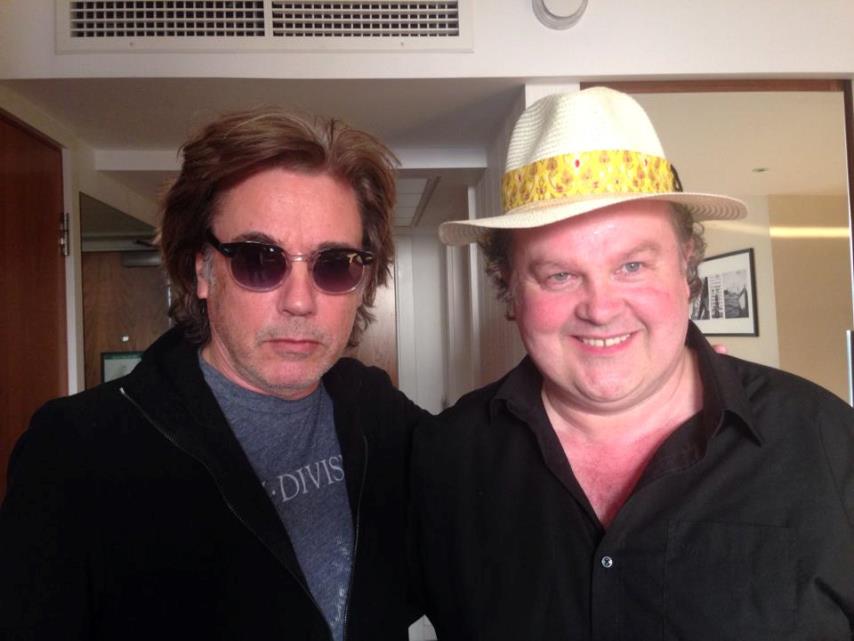
SYNTH GURU Paul Wiffen has moved between working for manufacturers, artists and technical magazines in the decade when synths really came to the foreground.
You might not know his name, but if you are an electronic music fan of any capacity, the likelihood is that you have probably heard, used or read his work. His technical curriculum vitae includes Electronic Dream Plant, Elka, the Oxford Synthesizer Company and GEM.
Meanwhile, he has contributed to publications such as Electronics & Music Maker, Music Technology and Sound On Sound. The musicians he has worked for reads like a Who’s Who of music, including Vangelis, Jean Michel-Jarre, Paul McCartney, Peter Gabriel and Stevie Wonder. Paul Wiffen kindly reminisced about his varied music career.
What was your own musical background and how did you get into synths?
I grew up in Liverpool where my mother took to me to pianos lessons once a week with a French lady who lived next to Ken Dodd RIP in Knotty Ash. I wasn’t very keen on her as she would hit me over the back of the hand with a ruler if I didn’t keep my wrists up, but when I played at my school’s carol service in the Anglican church next door, I was hooked. But I was a classical snob the entire time I was in Liverpool, looking down my nose at the kids who sang the Beatles “Yeah, yeah, yeah!” in the playground.
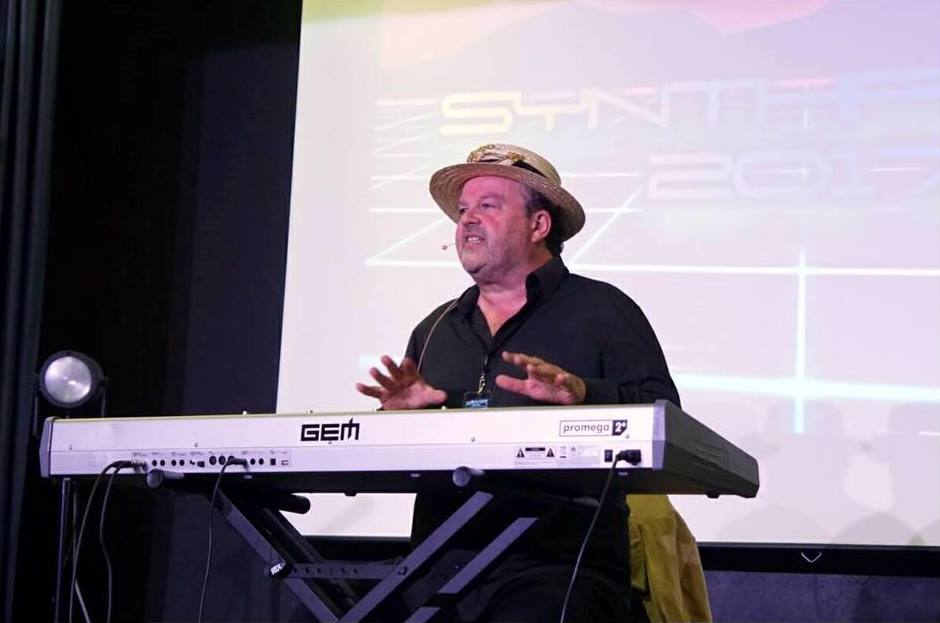
It was the piano intro on Simon & Garfunkel’s ‘Bridge Over Troubled Water’, Rick Wakeman on Bowie’s ‘Life On Mars’ and Cat Stevens’ ‘Morning Has Broken’ which opened my ears to how commercial music could still be technically challenging and beautiful.
Elton John’s ‘Rocket Man’ was another early favourite as I was obsessed with the exploration of space
At 10, I started to pick up my Dad’s bashed up old steel-string guitar and messing around when I started watching Top Of The Pops and saw that the guitarists got more attention. I asked my mother for a guitar of my own, but she would only buy me a nylon strung one along with classical lessons as she believed “if you’re going to do something, do it properly.”
And when I saw Bowie for the first time on Top of The Pops doing ‘Starman’, my grandma had asked what I wanted to for Christmas, I said a blue twelve string guitar. I got the 12string but the local store in Ilford didn’t have it in blue. I still play 12string as well as keyboards to this day in ENDLESS FLOYD, a PINK FLOYD tribute band.
I earnt the money for my first electric guitar (see picture) by getting up at 5 in the morning one Easter Holidays to work in a dairy washing out crates full of rotten milk, so I really “paid my dues” to be able to play the blues. I started to jam with other guys at school, including Jon Parricelli who I had guitar lessons with (he later toured with Mike Oldfield and is now the first call session guitarists for film sessions in London with Hans Zimmer and others – he played the Mandolin parts for ‘Captain Corelli’ and taught Nicolas Cage how to mime as well as appearing in the film twice as an Italian and Greek musician).
My first live performance was backing Rik Mayall in a school concert (he was in the year above me at school but in the same house) for his version of ‘Trouble’ which later became legendary…
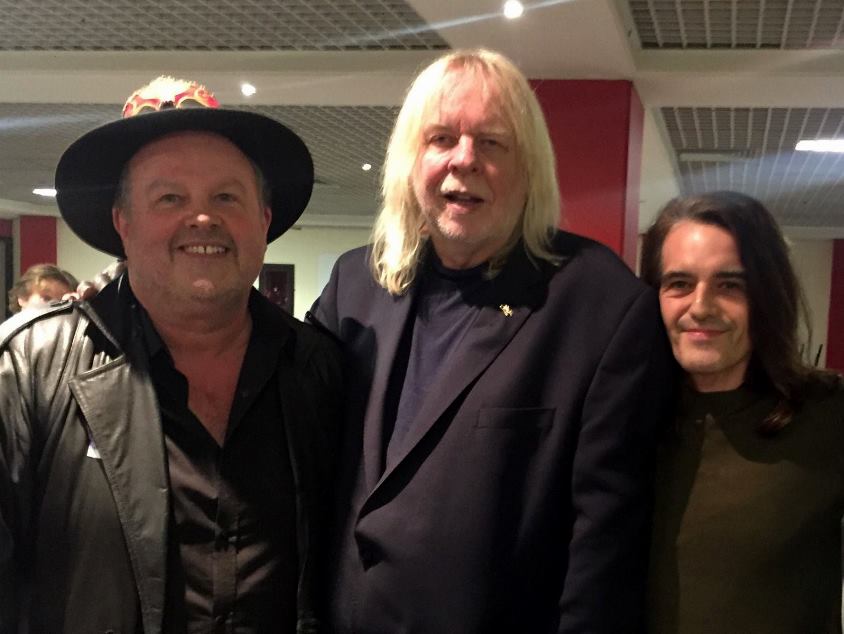 My mother actually got my first band of schoolmates our first gig at the age of 15 at the Christmas party of the school where she was deputy headmistress.
My mother actually got my first band of schoolmates our first gig at the age of 15 at the Christmas party of the school where she was deputy headmistress.
We were a covers band and played STATUS QUO (easy to learn), Alvin Stardust and in a prophetic moment, the-then No1, ‘Part Of The Union’ by Rick Wakeman’s first band THE STRAWBS (with whom I would later play occasionally as a dep) which proved the most popular.
The adulation from the girls afterwards turned out to be because they thought I looked like Donny Osmond rather than any great skill on our parts, but we lapped it up anyway.
Although I kept up piano lessons till I left school, my heart wasn’t in it. I tried violin and led the second violins in the school orchestra and then flute (because of JETHRO TULL and GENESIS). Then in the same week I heard John Barry’s ‘Theme From The Persuaders’, Elton John’s ‘Funeral For A Friend’ and GENESIS’ ‘Watcher Of The Skies’ and couldn’t identify the source of the sounds. I asked the older guys at the public school in Worcester I won a choral scholarship to and heard the terms Minimoog, ARP Odyssey and Mellotron for the first time.
I spent the next few years at the public school trying to find out what they were and where I could try them… ironically, Rod Argent’s Keyboards opened a branch in Worcester the year after I went off to Oxford University to study languages.
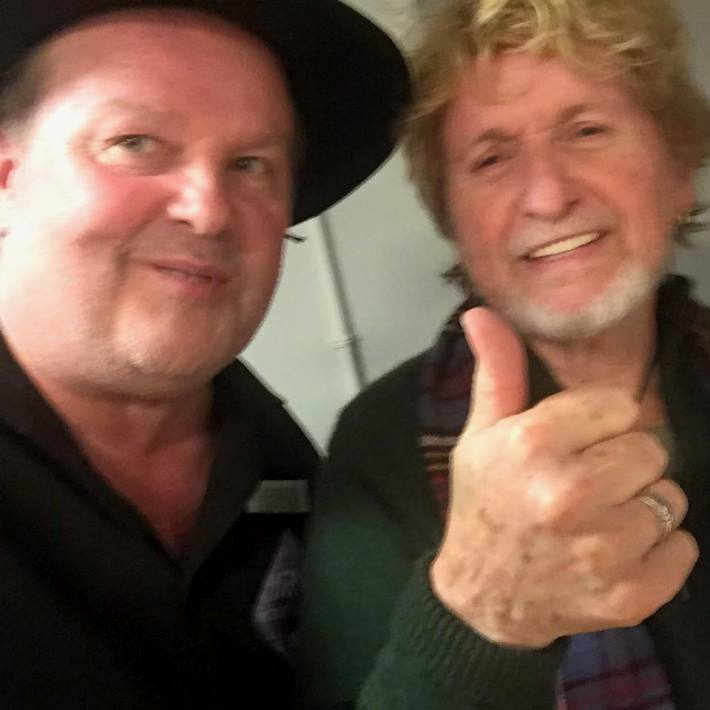
In an attempt to sound more like the prog rock bands I was getting into, I recruited the school organ scholar and we could only rehearse and perform in the main school hall where the big organ was.
Our repertoire at that stage was very organ-based, ‘Sylvia’ by FOCUS, ‘Roundabout’ by YES,’ Jerusalem’ by ELP, ‘Black Night’ by DEEP PURPLE, and ‘The Knife’ and ‘Firth Of Fifth’ by GENESIS because I could play my favourite guitar solos over the church organ. I’d also started writing prog style music of my own because the organ scholar could play anything in whatever time signature and key transpositions I wrote it.
As I had gotten my place at Oxford early, the headmaster let me put on a gig at the end of my last term for all the boys in my school and the girls from the local convent school to celebrate the end of their A levels and it was a huge success, and this time the girls admiration was at least in part for our musicianship. It was that night that I decided I would be a musician, not an interpreter! But I still went to Oxford as I suspected it would be a better place to get into a band than Worcester.
In my second week at Keble College, I met my future manager/roadie John Shaw in the TV room watching The Old Grey Whistle Test and when he found out I could play, he got me my first recording session with the Oxford University Broadcast Society of which he was a part (he wanted to be a radio DJ and they had links with the BBC) as they were always looking for victims to record on their 2-track! I recorded one of the songs I had written at school and my prog rock version of ‘House Of The Rising Sun’ in 9/8 with flute solo!
They played these to a band ONE FOR THE WALL who came in to record the next week looking for a lead guitarist and I was offered the gig. During our time in Oxford, we played support to SIOUXSIE & THE BANSHEES and THE DAMNED as well as headlining several Keble College Balls.
The band bought me my first electronic keyboard (a Crumar Multiman and the bass player had a Mini-Korg 700 mono synth with the knobs below the keyboard which I put on top of it) to give us a better chance when we entered the Melody Maker Rock/Folk Contest, so I started playing keyboards on the songs that were better suited. We came second in that in 1979 to SPLODGENESSABOUNDS. But the band split before we could record the album which Ian Anderson of JETHRO TULL offered to produce for us.
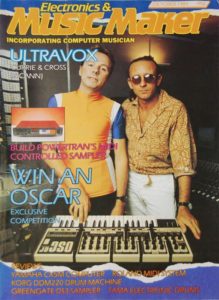
You also worked with Chris Huggett (who designed the EDP Wasp) on the OSCar which was designed with ULTRAVOX in mind? What happened there?
Thinking my chances of being a rock star were over, I taught English as a Foreign Language in Abingdon for a while. Then realising synths were becoming more important than guitars, I responded to an ad in the back of the Melody from an Oxford-based company for a German speaking synthesiser demonstrator to demo a new synth at the Frankfurt trade fair.
I hadn’t ever used a proper synthesiser (string machines and other hybrids but never a synth with knobs) but I had a Masters degree from Oxford in French German and played some Rick Wakeman and Stranglers on the plastic touch keyboard, so they hired me.
This turned out to be Electronic Dream Plant (Oxford) Ltd, the makers of the £200 Wasp and the new synth was the £99 Gnat. After the trade show, they asked me to stay on to sell to schools and colleges. I got Eton, Reading University and the Radiophonic Workshop in the first week). When they found I had sold two Wasp Deluxes and a Spider sequencer where they had always failed to sell, then they put me in charge of all sales until the company went bust at the end of 1981.
I had realised there was no-one in the company capable of designing the synths and some enquiries revealed that the designer Chris Huggett had left because he had been made bankrupt by a previous version of the company going bust and he was having an affair with the managing director’s wife!
I had tracked him down to a washing machine plant where he was developing test software for the production line before the company went bust and invited him to a demo I was doing at the Oxford Union. He swore no-one had ever made them sound so good and we hit it off over drinks afterwards. As a result, we decided to set up the Oxford Synthesiser Company with his parents’ money, and I slept on his couch for a few months while I spec’d the OSCar out and he set about making it happen.
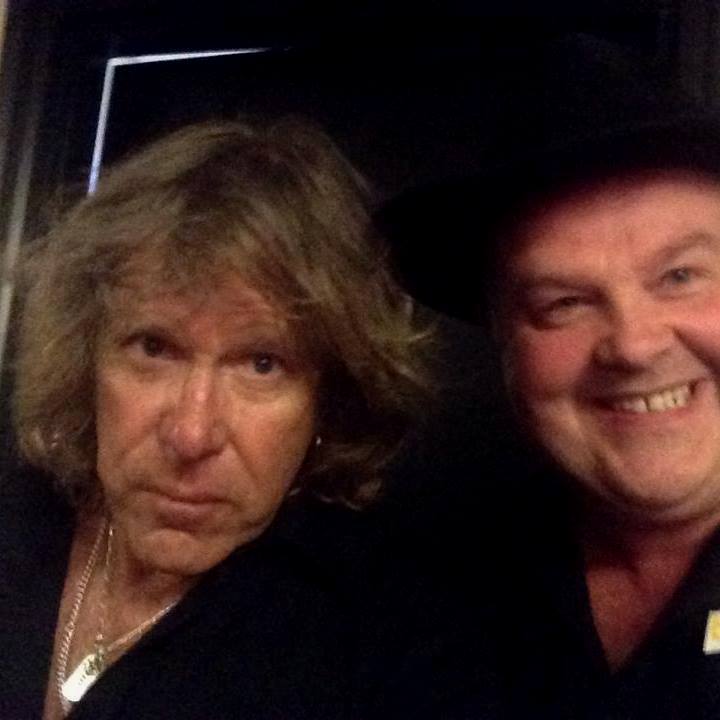
At this point, I needed to go earn some money so became Elka’s Synthex demonstrator at the following year’s Frankfurt while Chris did his electronics stuff. Elka followed this with an offer to do all the factory presets, which I did in my flat on the Goldhawk Road that summer. Then when the OSCar came out, I found myself selling both of these instruments to the likes of ULTRAVOX, BRONSKI BEAT, THE BUGGLES’ Geoff Downes (who then joined YES) and other chart acts as well as my prog rock heroes like Rick Wakeman, Keith Emerson and Don Airey (then with Gary Moore) and more importantly, programming them on the records.
The French distributor of the OSCar introduced me to Vangelis and he invited me to do sound design on this new film he had just been hired to score, ‘Blade Runner’. Meanwhile Keith Emerson introduced me to his neighbour Paul McCartney who used me on ‘Spies Like Us’. He recommended me to Stevie Wonder so I moved to California on the back of ‘Blade Runner’ and ‘Spies Like Us’ and the rest is history.
So what was working with Vangelis on sound design for the original ‘Blade Runner’ and then later on ‘1492 Conquest of Paradise’ a few years later like?
The original ‘Blade Runner’ was my real first work as a programmer on a session instead of in my bedroom doing presets to be released in the instrument. It came about because Vangelis was late when the French OSCar distributor took me round to Nemo Studios. I started messing about on his Yamaha CS80 and came up with a sort of whistling sound. Suddenly, Vangelis was elbowing me out of the way (at first I thought he was throwing me out for breaking his keyboard) so he could play it. That ended up being right at the beginning of the movie the first time you hear the main theme.
Vangelis wasn’t at all interested in the OSCar (he never used monosynths) but he asked me if I had any free time to work on a new project he had just been hired to work on (I was barely making any money from OSC, just expenses which Chris’ parents would cover).
It was months before I found out it was a movie and even longer before the guy that kept showing up was Ridley Scott whose ‘Alien’ I had loved. I wasn’t allowed in the control room where the dub was happening as the whole movie was shrouded in secrecy, I think I even had to sign something.
A couple of years later when Vangelis had moved to New York, I called him to see if he wanted to endorse a new sampler from Akai, the very first S900. He flew me to stay with him at the Hotel Pierre on Central Park but once again, he wasn’t so keen on the Akai, but liked some of the synth strings sounds I had played him from other projects. He ended up keeping me for two weeks while he scored ‘The Bounty’ which starred Anthony Hopkins and Mel Gibson.
In 1989, I was sent to show him the Ensoniq ESQ1 in Rome but he didn’t like that either. Once again he asked me to program sounds on what he already had for a film called ‘Francesco’ starring Mickey Rourke as St Francis Of Assisi (worst casting ever!). I remember one evening, Vangelis was trying to come up with something for a scene where St Francis rolls naked in the snow to stop his impure thoughts. The scene was in slow motion and you could see everything (but all shrivelled up because of the cold). Vangelis leaned over to me and said “Sometimes Paul this is the best job in the world but tonight it is the worst!”
I also did a bit on a Roman Polanski movie called ‘Bitter Moon’ (Hugh Grant’s debut) for him and while he was doing that, the call came through from Ridley to do ‘1492 Conquest of Paradise’. But Roman wanted him to be part of the Cannes jury that year as well, so I ended up programming sounds in Vangelis’ suite at the Carlton in Cannes while Vangelis was watching the films on the Jury.
Fortunately he was using MIDI by then, so I could program the sound to fit the exact notes he had played on the sequencer. Sadly I missed out on all the choral sessions but it was the most glamorous project I have ever worked on as we got to go to Cannes afterparties every night.
How did working with Paul McCartney on ‘Spies Like Us’ come about?
That was just before I moved to the States and was mainly Emulator 2 samples. My agent at the time was Gary Langan’s girlfriend and when THE ART OF NOISE themselves ran out of time to work on the extended soundtrack, she drafted me in to work on additional material with the same sample-based technology. The main thing that project achieved was the link to Stevie Wonder and also that my mother never asked again when I was going to get a proper job as Paul McCartney and Stevie Wonder were the only two pop stars she had ever heard of!
Did you ever have a go at building the Powertran Transcendent 2000 kit which was the first synth for people like Thomas Dolby, Bernard Sumner and Ian Craig Marsh?
At school, I joined the science club to build myself a fuzz box from a magazine article… but I was so dangerous with the soldering iron that not only did it not work, but the physics teacher said I had destroyed all the components and the tracks on the circuit board.
I took this as a sign that I should never pick up a soldering iron again and I never have. By the time I joined the team of E&MM, the publisher had bought out Maplins and there were no more kit building articles.
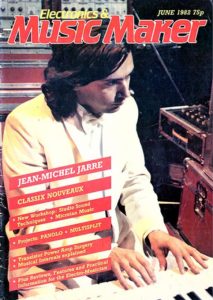
So how did you come to be involved in Electronics & Music Maker, which came about as an offshoot of Maplin Electronics who recently went into administration?
E&MM was launched while I was at Electronic Dream Plant and the first editor, Mike Beecher, came to our offices behind Blenheim Palace to interview the managing director. But he spent most of the morning in the bath so I was deputised to talk to Mike instead.
Mike remembered me and when he wanted to fire a previous member of staff for stealing review equipment (he shall remain nameless), he remembered me. He tracked me down to the flat on the Goldhawk Road where I was just finishing the Elka Synthex presets (after which I had no more work).
The job offer came just in time and I spent the next year commuting between Shepherds Bush and Southend-On-Sea (and then Cambridge when the publisher, Terry Day, decided to move it nearer his house).
What was the atmosphere like in the E&MM office, were you like frustrated musicians or just fans of acts who were innovators and made a commercial pop success of electronic music? Was there much inside politicking among the writers to get particular assignments?
We were all frustrated musicians and in Ken McAlpine’s case, a frustrated designer.
Even Trish who answered the phone had been in an electronic band and she moved from Belfast when that band split to be the receptionist… she ended up running Music Technology in California and marrying a synth designer from Sequential!
I was a fan of MARILLION because they were almost prog and of course ULTRAVOX who I would occasionally be hanging out with as well as helping in the studio (I worked on ‘Love’s Great Adventure’), because I refused to move from London. I got to put them on the cover eventually when ‘The Collection’ came out, but this didn’t happen for ages as the key staff manager was jealous of this contact.
One of the other guys was a big fan of SIMPLE MINDS and the only artist we all agreed on was Kate Bush who we had on the cover twice. But we tended to have pictures of the gear rather than the clothes, so the record companies’ press officers preferred Smash Hits interviews to ours.
The real problem was the editor Mike Beecher, a former school teacher who was about 45 (seemed ancient to me back then) who played the organ with his own dance troupe of teenage girls (definitely a bit dodgy) performing to Jean-Michel Jarre etc… he thought he knew it all and just wanted the rest of us to sub his interviews. He would review all the cool stuff and go to do all the interviews.
When his wife went into Labour, I set up to do a SPANDAU BALLET interview while he was at the hospital and when he got in, he tried to take it off me. We both marched into the publisher’s office and Mike said “either that boy goes or I do!”
Terry was terribly apologetic but said Mike was the face of the magazine and he needed him. He paid me a month’s redundancy and I walked into a job demoing the Rhodes Chroma and that led to working for Sequential in the UK reporting to their European office in Amsterdam.
I was just getting bored of their rubbish new MaxTrak and TOM drum machine and the phone went and it was Terry telling me he had fired Mike Beecher because everyone was refusing to work with him, so I came back for 6months in Cambridge. Then I told Terry I was thinking of moving to the States and he made me launch editor of Music Technology over there (E&MM eventually changed its name to Music Technology as well).
However, Terry put another editor over me who couldn’t write anything except manuals, I ended up writing most of the magazine and he was being paid all the money. I had a big argument with Terry at the AES show in LA after three months and stomped off when he said I had better be freelance.
I walked onto the Keyboard Magazine booth around the corner and the editor Dominic Milano gave me a column on MIDI every month and big feature on sampling and I never looked back. Oberheim hired me to do a sample library and demo the Matrix 12 and DPX-1 at the Summer NAMM show in Chicago. Then Stevie Wonder asked me to go on tour with him and I never looked back.
The following summer, I discovered Ian Gilby who I’d worked with at E&MM since day one and his brother Paul had had enough and left to set up Sound On Sound and they asked me to write something for their second issue which I’ve been doing ever since. On their 25th anniversary, Ian publicly credited me as the longest serving writer on the magazine.
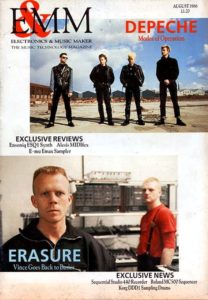
ELECTRICITY CLUB.CO.UK bought both E&MM and Smash Hits regularly and it was quite interesting that the front covers of both mags would often share the same artists eg THE HUMAN LEAGUE, DEPECHE MODE, YAZOO, CHINA CRISIS, SIMPLE MINDS, OMD etc? Any thoughts on that?
It was funny! The press officers wanted Smash Hits interviews but the bands wanted to be interviewed by us, although it took us some time to find this out! Sometimes the bands had more questions for us regarding the gear than we had for them. I got several programming gigs with CHINA CRISIS and SIMPLE MINDS out of interviews. But the press officers always scheduled Smash Hits before us!
How did the approach to the American version of E&MM called Music Technology differ?
There was much less interest in the electronic bands than in the UK, but the older British artists were still huge in the US and I got to put my prog heroes on the cover, Peter Gabriel was our first cover artist and Keith Emerson soon after. But when ‘Sledgehammer’ and ‘So’ topped the charts, then E&MM put PG on their cover as well.
Eventually the parent mag changed its name to Music Technology which appears to reflect the move from analogue to digital, how did you find adapting?
The synths I had worked with the OSCar and Synthex already had digital oscillators (so they didn’t go out of tune) so I was always looking to the future; my nickname there was The Digital Evangelist – Synth Guru was given me by artists like Billy Currie, Rusty Egan and Geoff Downes.
However, I used to have massive arguments with some of the staff in the UK about analogue vs digital, and with the American staff about how to spell analog 🙂
They all took a long time to adapt; I used to joke I was John The Baptist, “a voice crying in the wilderness” and the publisher used to say he was just waiting for a stripper to ask for my head on a plate. However, the manufacturers were on my side as Korg replaced the analogue Poly 6 with the digital Poly 61 and 800 and even Yamaha came out with a sampler (they hired me to do the library), so I won out in the end.
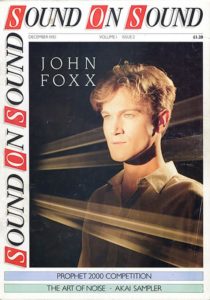
Music Technology later ended in 1994 when it was merged with Home & Studio Recording combined to create The Mix, but you continued writing for Sound On Sound in particular which is still going. What’s it like for you now, compared with then?
I was exclusively writing for SOS in Europe by 1986 and doing columns for Keyboard in the States and both of those were more targeted at professional musicians.
You did various things for Trevor Horn including PROPAGANDA, Grace Jones and BAND AID?
Once Frankie broke, Sarm was the studio to work at and ZTT were the label to be signed to. So there were several of us who were desperately trying to get in there to be involved. However there were several gatekeeper keyboard players that Trevor Horn used who didn’t like him to know that they weren’t programming their own sounds. So I ended up doing stuff for them and then they would take the sounds in and take the credit for them.
That’s what happened on PROPAGANDA and Grace Jones, but I didn’t get to meet Trevor. But then Midge Ure from ULTRAVOX got in touch about how to trigger the OSCar from a click track on ‘Do they Know It’s Christmas?’ and he never wanted to hide that he had other people helping him out with the technology.
You had your own band SPY which almost got signed to ZTT to become the posh Frankie! But what happened there?
It wasn’t so much my band as that of Malcolm and Dave, a couple of public school boys who saw themselves as the posh equivalent of Holly Johnson and Paul Rutherford, except that they didn’t really sing but talked over the music. They had already recruited Stuart Bruce who had engineered some of the Frankie record and played guitar on ‘Wish The Lads Were Here’ and they heard some of the stuff I had done on Paul McCartney ‘Spies Like Us’ and asked me to join.
We set up my Prophet 10 and Prophet T8 in Dave’s parents’ house on Hyde Park (which was where JM Barrie had written Peter Pan) and we started writing and recording. I met Jill Sinclair once to be added into the ZTT deal. However, Malcolm had persuaded Renault and Saab to provide some cars for a TV spinoff (the lyrics were all like a 60s spy show with car chases a bit like YELLO’s later ‘The Race’) and then he had sold them to fund his expensive lifestyle (sniff, sniff) and when the show wasn’t forthcoming, they wanted the cars back! So recording tracks properly with Trevor was postponed while the missing cars were tracked down.
However, by then California was calling me strongly in the form of Music Technology and Stevie Wonder so I was a bit distracted. By the time I came back for Christmas, we’d been dropped from ZTT because they were being sued by the car companies and worst still, Malcolm had sold my keyboards to Stuart for more money as he had obviously put all the money from the cars up his nose!
Fortunately, I was able to come to an arrangement with Stuart that if I ever needed them to record with in the UK, I could do it at the studio he had at Peter Gabriel’s Real World, and I had more work with Stevie on the road (he had several of each in case I ever needed). I have since got the T8 back which was my favourite, but Stuart preferred the 10 so he kept that and it’s still at Real World.
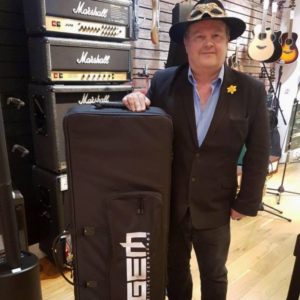
You also did programming for Jean-Michel Jarre, what’s this story about you nearly drowning at his London Docklands concerts?
I came back from a Stevie Wonder world tour to find a two month old message on my answering machine from Jean-Michel Jarre asking me to work with him. He had liked the Synthex so much on ‘Rendez-vous’, he had used all the factory presets up and wanted some new sounds. Elka had put him in touch with me. I was worried I must have missed the work but it turned out he was only halfway through ‘Revolutions’.
So I shot over to Paris with a new Akai sampling drum machine, knowing he had the Synthex and the OSCar already. The track I contributed most to is ‘Industrial Revolution Overture’ and it is probably my best sound design work apart from ‘Blade Runner’ because like Vangelis, JMJ let me come up with my own sounds, rather than trying to design them to order.
Once the album was done, he revealed he was doing the Docklands concerts and asked me to get involved. In the end, the weather was so bad that the health and safety wouldn’t allow any electricity on the stage and so everything had to be mimed. We all got soaked to the skin over and over in that week, hence the drowned reference (my two Synthexes on stage came back to me a week later full of water so they did drown but dried out OK). But the rain looked great in the concert footage and at least we didn’t get electrocuted.
Recently I was delighted to be invited to Jean-Michel’s ‘Electronica Live’ tour at the O2 and find that the climax of the concert was a new piece called ‘The Time Machine’ using exactly those old Synthex and OSCar sounds. Afterwards backstage, Jean-Michel said to me, “see I saved the best till last!”
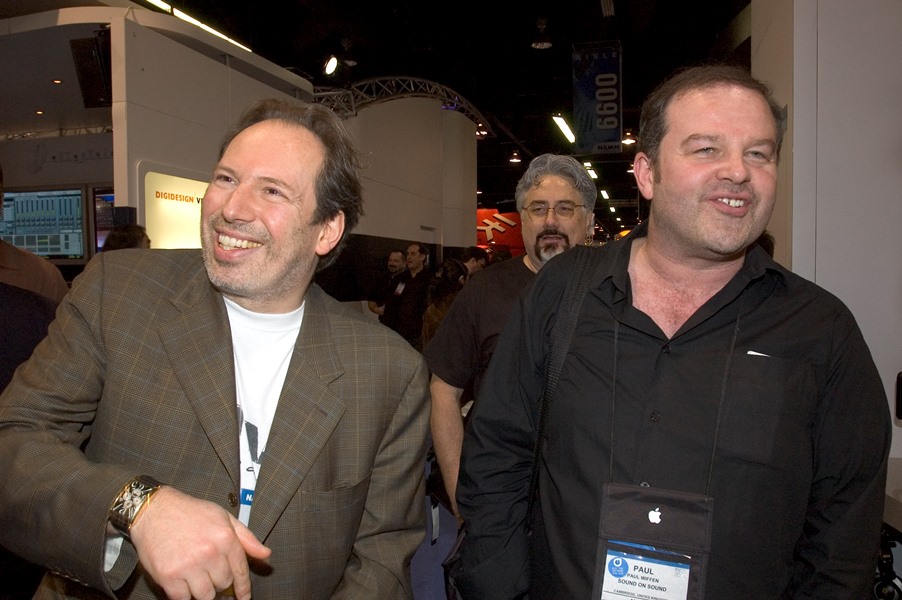
What was your involvement in Hans Zimmer’s days at his Lillie Road Studios in London before he became a megastar film scorer in Hollywood?
In the mid-80s, Hans Zimmer was moving from record production into soundtracks, initially with ‘The Deer Hunter’ composer Stanley Meyers. When he branched out on his own, he missed the budgets Stanley had to record orchestras, so he ended up buying half a dozen Akai S1000s to load with orchestral samples and I supplied many of those. Occasionally there was a bit of synth work but he mainly had an insatiable appetite for orchestral samples.
Of course when he moved out to LA, he moved it all over to Gigasampler on the PC and then won the Oscar for ‘Driving Miss Daisy’, so he didn’t need my input any more as he was given the budgets to use real orchestras for recording.
You had a Hollywood phase yourself with Stevie Wonder with tracks that got used in ‘Die Hard’, ‘Woman In Red’ and Spike Lee’s ‘Jungle Fever’?
The best of those tracks by far was ‘Skeletons’ which is playing in the limo while the black chauffeur in ‘Die Hard’ is partying with a couple of girls. Stevie originally wrote the whole album ‘Characters’ on a PC sequencer called Texture triggering mainly DX7 sounds on the TX816 which the rest of us in his team hated.
So Rob (Stevie’s guy on Synclavier, Fairlight and Waveterm) and I used to compete to replace those sounds with something fatter and warmer.
I won on the bassline of ‘Skeletons’ which was a Synthex, an OSCar and Prophet 2002 bass sample all MIDI’ed together and that remains the best bass sound I have ever come up with. I think Rob won with some of the polyphonic keyboard parts on Synclavier and Fairlight, but I’m happy I nailed that sound.
The other soundtracks weren’t so much fun as they were tarting up old tracks in one and working with Stevie’s worst lyric ever (a sort of Latin declension of “I got Jungle Fever, You got Jungle Fever, We got Jungle Fever”) on the other. But it did seem that for I while, I was working on more soundtracks than pop records.
What’s this about your small contribution to a Michael Jackson song?
It came about because I had worked on ‘White Wedding’ with Billy Idol back in the UK and Stevie Stevens, Billy’s guitar player, was the man shredding on that record. I ran into him at the Whisky A Go Go on Sunset Boulevard and he invited me along to the Michael session just to watch. Then Quincy decided he wanted some keys on ‘Dirty Diana’ after all and I was there so got asked. Listen to the opening sound, that was something I came did on the Synclavier over the lunchtime. The strings in the background almost inaudible under all that blistering guitar were Emulator II samples I loaded into the Oberheim DPX-1 that I happened to have in the boot of my car.
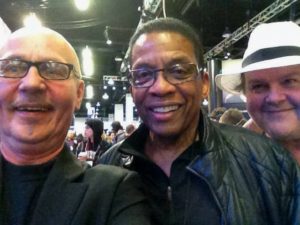
As someone who has managed to move between technical writing, working for the manufacturers and working with established artists on their music, what do you think have been your proudest achievements?
I like to think that I was a bit like a pollinating bee moving backwards and forwards between manufacturers, artists and technical magazines. Most of my contemporaries never managed to do that.
So I would be first to get my hands on the gear as the reviewer, then experience how the gear was being used by artists (often not at all how the manufacturer intended) and advise the manufacturers on how to do it better next time.
Equally when working for a manufacturer who had come up with a new product and I could see which artist to approach with it. A great example of this is when I was working with Korg and they released the Z1. Peter Gabriel had confided to me that he liked technology that messed the sound up (like the early Fairlight which made the sound crunchy). When the Z1 came in with an effect called Decimate which did the same thing, I was able to call up his engineer and say that this might really suit what Peter was working on.
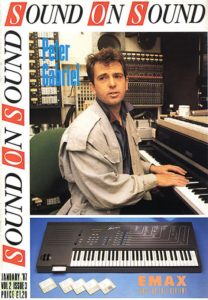 When I took the Z1 in, within minutes I found myself running one of Peter’s vocals through the Z1 to make it sound harsher and more menacing. As Peter Gabriel was the guy that gave me hope at public school that public school boys could have a career in rock’n’roll and I had loved what Brian Eno had done to some of his vocals on ‘The Lamb Lies Down On Broadway’, it was a dream come true to be treating one of his vocals in a similar fashion. So I’m probably proudest of the credited thanks to me on his ‘OVO’ and ‘Up’ albums.
When I took the Z1 in, within minutes I found myself running one of Peter’s vocals through the Z1 to make it sound harsher and more menacing. As Peter Gabriel was the guy that gave me hope at public school that public school boys could have a career in rock’n’roll and I had loved what Brian Eno had done to some of his vocals on ‘The Lamb Lies Down On Broadway’, it was a dream come true to be treating one of his vocals in a similar fashion. So I’m probably proudest of the credited thanks to me on his ‘OVO’ and ‘Up’ albums.
When I went to work for Apple, he also had me set up his two daughters’ Mac computers for their film and music courses in New York, they both now have thriving careers in filmmaking and music.
While I was doing that, he lent me his apartment on Broadway to stay in. One of my happiest memories is playing ‘The Lamb Lies Down On Broadway’ on his grand piano facing the Empire State Building opposite his terrace. If only there had been a camera on the Nokia cellphone I had back in 2002!
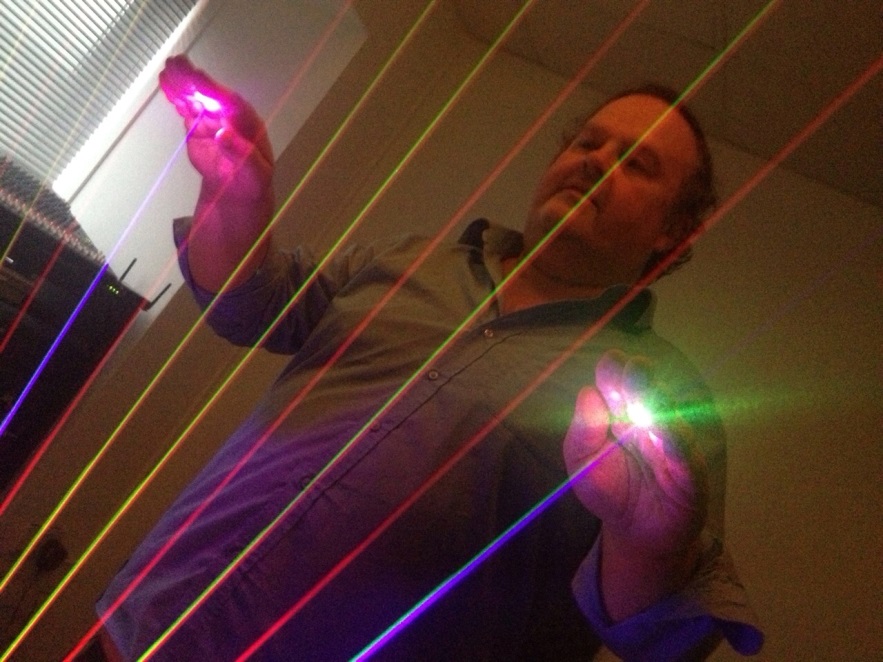
Most recently I have returned to the piano where I started, writing music for films and TV. The most amazing thing happened when a Finnish company bought up the Italian company GEM who had in turn purchased Elka when they got into financial difficulties.
I contacted them as they announced a reissue of the Elka Synthex which started my career… I am still best known for JMJ’s laser harp sound from ‘Rendez-vous’.
When we needed to publicize the Synthex reissue, I offered to contact Jean-Michel to do us a video message about the need to do that reissue. Apparently, some of their marketing department were extremely sceptical about that or that I even knew Jean-Michel.
When I got a return call from Jean-Michel inviting me to his hotel that very afternoon to film such a message and I was able to email it through that evening to Finland, they had to eat their words. That was a very proud moment especially when he name-checked me in the video without me asking him to.
While the Synthex redesign is coming to fruition, it turns out that GEM have the best digital stage piano I have ever played, the ProMega 2+ and so in the interim, I have been demonstrating that for them at music fairs in Frankfurt, Anaheim and Nantes with the piano chops which I have only recently been improving using the compositions I have only recently written (everything coming together at the right time).
In my additional role as Artist Liaison, I have also been able to bring in some of my childhood heroes turned great friends to using the GEM ProMega 2+ in their tours.
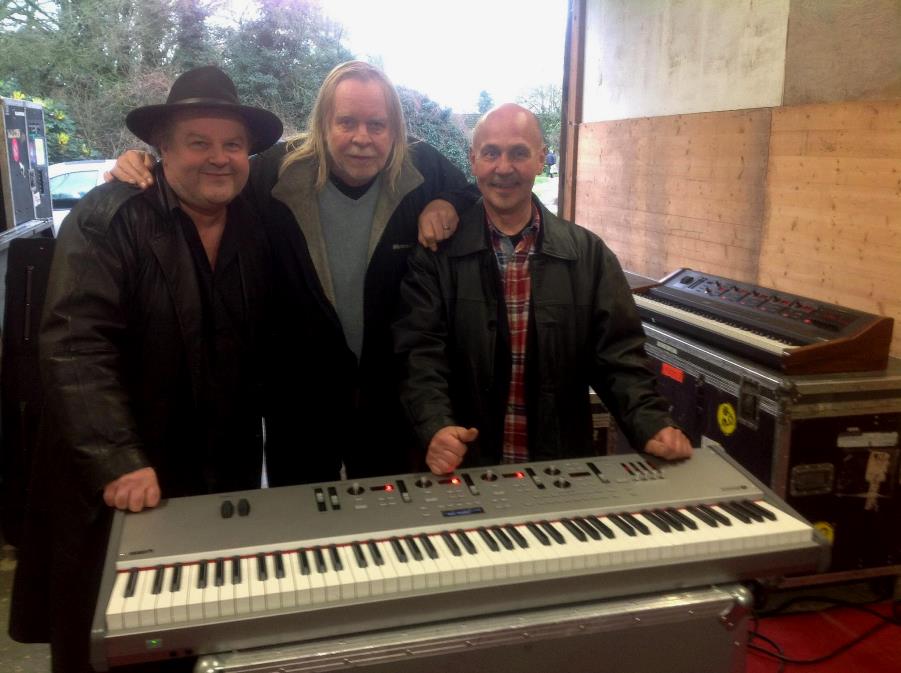
Rick Wakeman is back playing with his old YES bandmates in Jon Anderson and Trevor Rabin, and was the first person to play the first unit off the production line live in its stage debut last year on ARW dates in Asia and Europe. Hearing our instrument playing my childhood favourite ‘Heart Of The Sunrise’ half a dozen times live last year was a pretty proud repeated moment, as was hearing Steve Hackett’s keyboard player Roger King use it on the intro of my favourite GENESIS song ‘Firth Of Fifth’ as they toured the UK with it as well.
But my proudest moment of my relationship with a manufacturer was putting on my good friend Don Airey (now with DEEP PURPLE but from my prog favourites of 1978 COLISEUM II) and his own band of musicians I have known for years, on the Mainstage at last year’s Frankfurt Musikmesse to launch the ProMega 2+ to the distributors and dealers in the industry. Friends and former colleagues who now work for rival companies were texting and messaging their congratulations live as they were walking past and hearing their childhood favourites being played on our instrument.
At this year’s Frankfurt, we will add a domestic version with speakers and a baby grand version to the digital piano. How will I manage to top last year’s launch? I wonder if Rick is free… last year he was getting inducted into the Hall Of Fame with the rest of YES!
ELECTRICITY CLUB.CO.UK gives its grateful thanks to Paul Wiffen
A selection of archive articles by Paul Wiffen for Electronics & Music Maker, Music Technology and Sound On Sound can be viewed at http://www.muzines.co.uk/
https://www.facebook.com/SynthGuruWiffen/
https://twitter.com/synthguruwiffen
Text and Interview by Chi Ming Lai
Photos courtesy of Paul Wiffen
14th April 2018
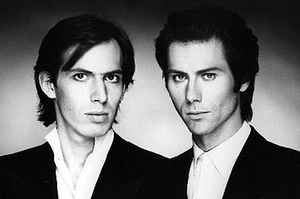 I had recorded my second album ‘Figvres’ with Hans Zimmer producing. We recorded the album at Snake Ranch Studios in Chelsea with Steve Rance engineering. Around this time, Hans invited me to do jingles, check out equipment at Syco Sytems, go to movies and, well, just hang out.
I had recorded my second album ‘Figvres’ with Hans Zimmer producing. We recorded the album at Snake Ranch Studios in Chelsea with Steve Rance engineering. Around this time, Hans invited me to do jingles, check out equipment at Syco Sytems, go to movies and, well, just hang out.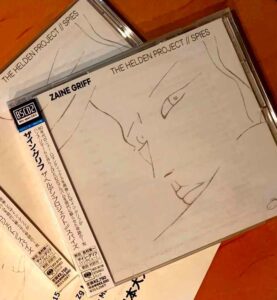 ‘The HELDEN Project: Spies’ is released by Sony Japan as a Blu-spec CD on 30th November 2022, available via https://www.cdjapan.co.jp/product/SICX-30156
‘The HELDEN Project: Spies’ is released by Sony Japan as a Blu-spec CD on 30th November 2022, available via https://www.cdjapan.co.jp/product/SICX-30156
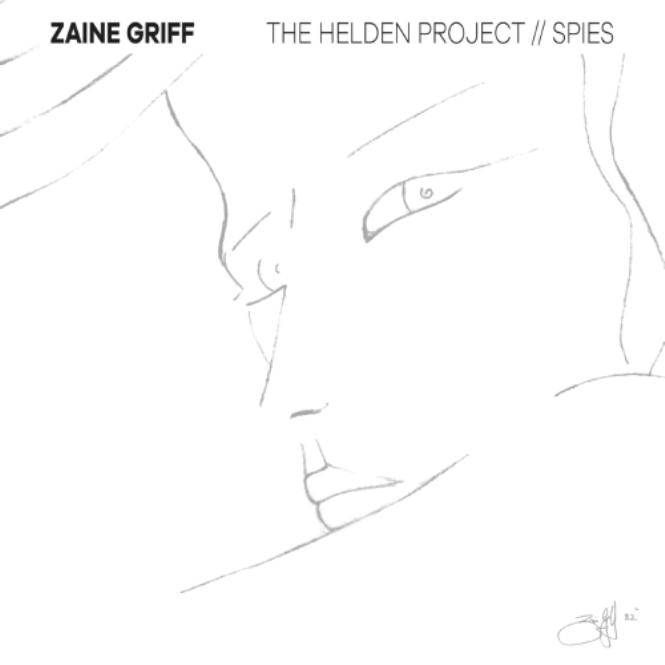
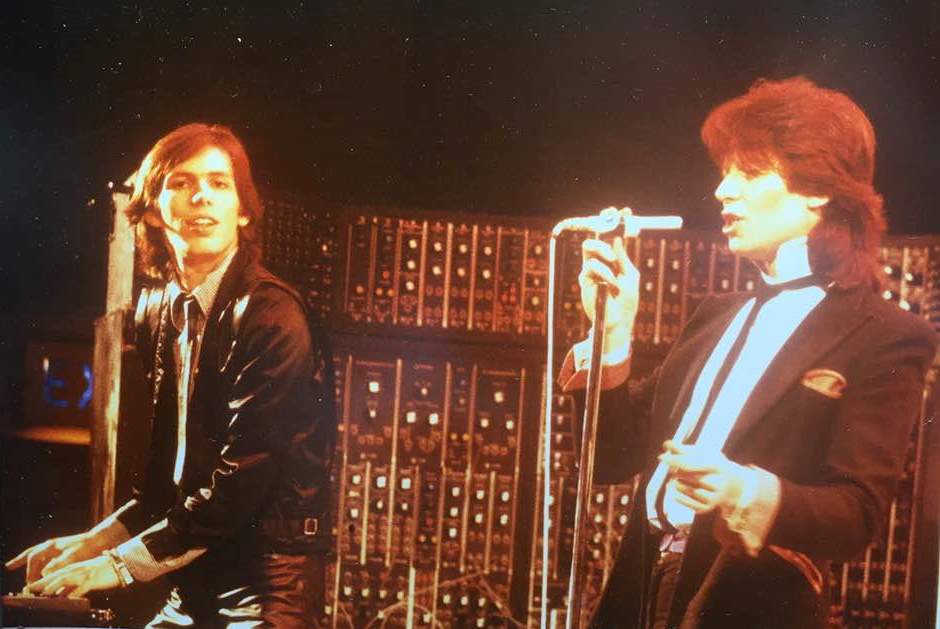
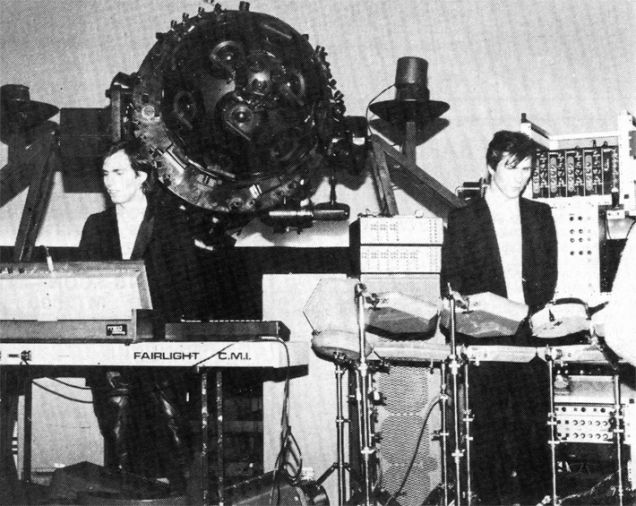
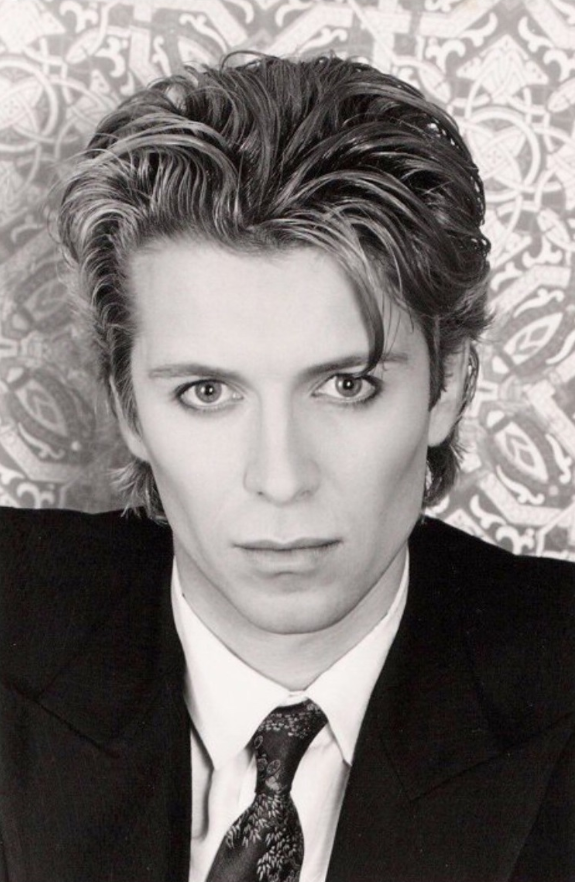
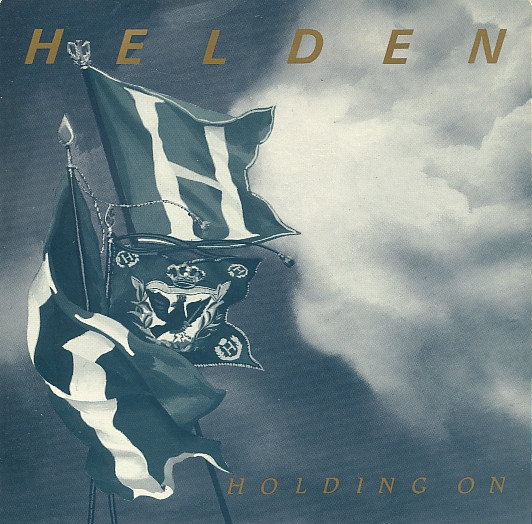
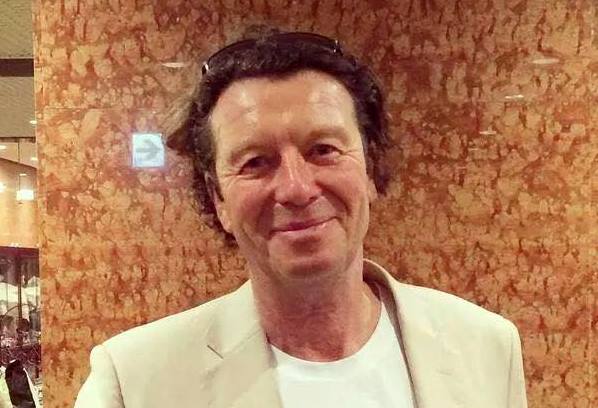
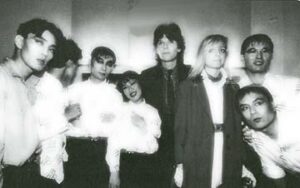

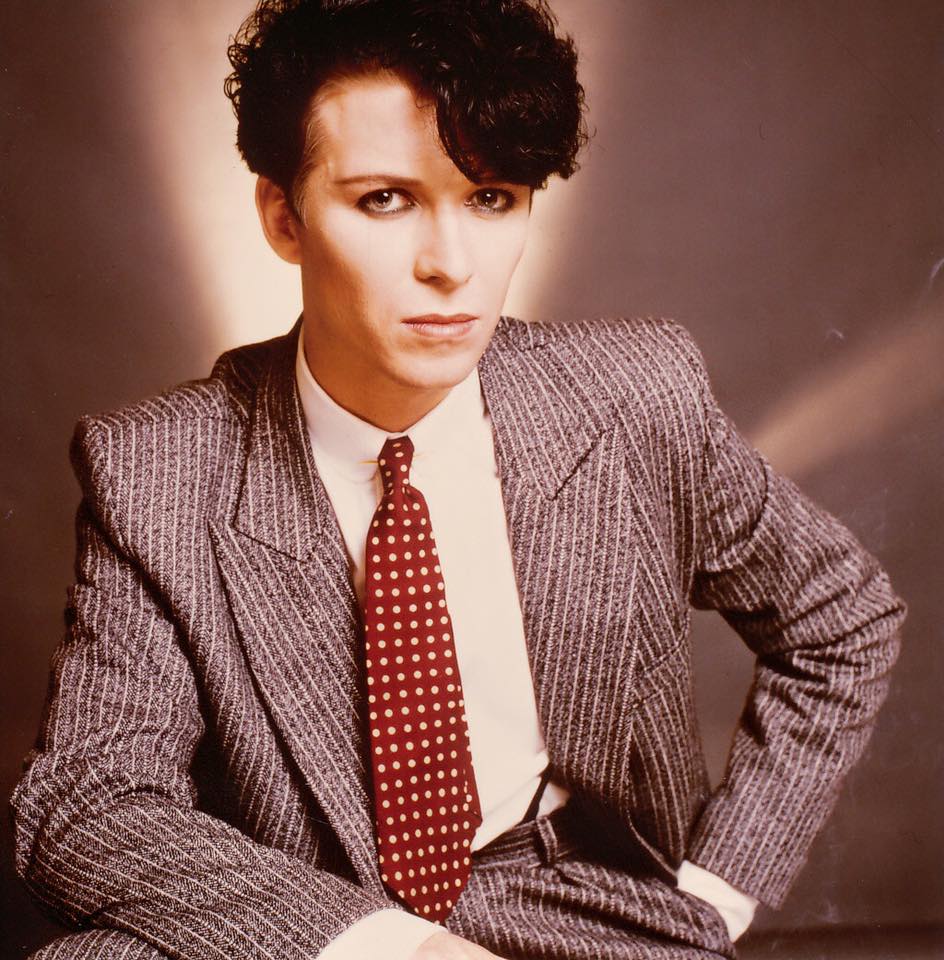
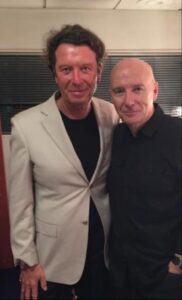
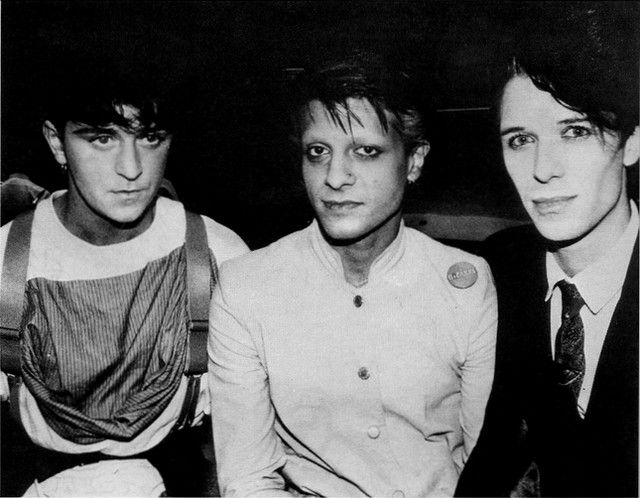















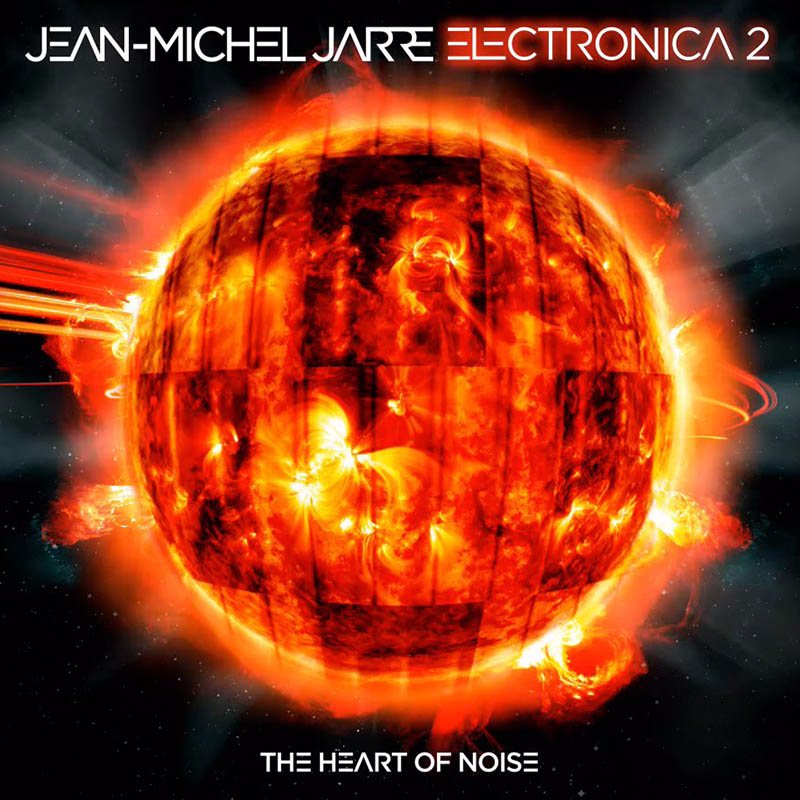
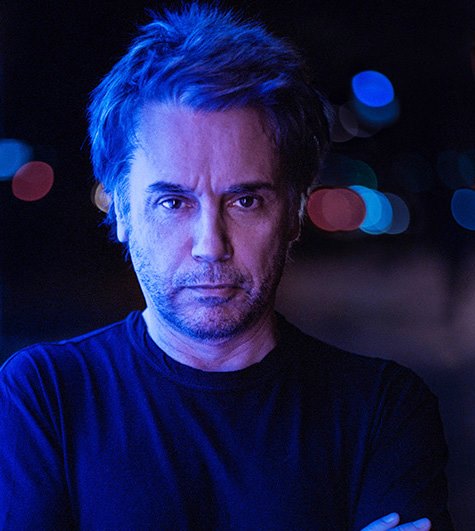


Follow Us!